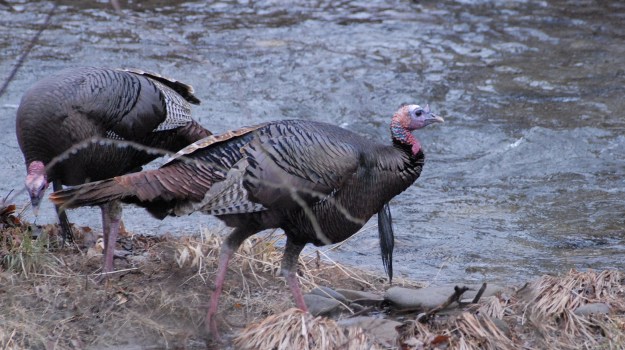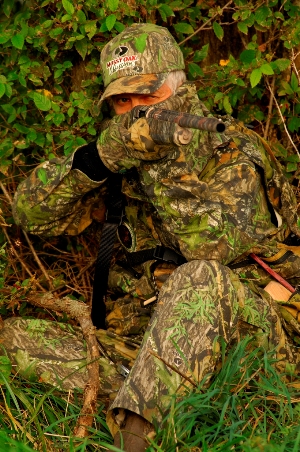
Editor’s Note: Bucky Hauser of Virginia is a member of Mossy Oak’s Pro Staff and has been hunting turkeys for 25 years. This week we asked Bucky to give us five tips that will help us take turkeys this season.
Knowing the woods you’ll be hunting is another really-important factor in being able to consistently bag gobblers during turkey season. You need to know where the streams and fields are, where fences are located, and what are the boundary lines of the property. You also need to know where the turkeys roost and the easiest paths for them to take from the roost trees to the places where they feed. A good woodsman often will take more turkeys than a good turkey caller. If you learn where the gobblers are, where they like to feed, where they like to strut, where they like to get water, and where they go when they sense danger in the woods, then you can hunt and take gobblers without a call.
 Another advantage to being a good woodsman is: since turkey hunting occurs in the spring, you know sooner or later you’ll have to hunt in the rain to take a turkey. If you’re hunting and rain falls, you need to know where the turkey will go. For instance, when it’s raining, turkeys like to stay in open places like fields, pastures, clear-cuts and any type of open terrain where they can see great distances, and the grass and weeds are no more than chin-high. Turkeys go to those open places on rainy days, because everything in the woods starts moving when the rain begins falling. They can’t hear as well in the rain as they can when it’s not raining. In the fields, pastures and clear-cuts, they can see for great distances and spot any predator that’s trying to take them. On windy days, turkeys like to get out of the wind on the sides of hills that the wind isn’t hitting, or in valleys and bottoms where they can see better.
Another advantage to being a good woodsman is: since turkey hunting occurs in the spring, you know sooner or later you’ll have to hunt in the rain to take a turkey. If you’re hunting and rain falls, you need to know where the turkey will go. For instance, when it’s raining, turkeys like to stay in open places like fields, pastures, clear-cuts and any type of open terrain where they can see great distances, and the grass and weeds are no more than chin-high. Turkeys go to those open places on rainy days, because everything in the woods starts moving when the rain begins falling. They can’t hear as well in the rain as they can when it’s not raining. In the fields, pastures and clear-cuts, they can see for great distances and spot any predator that’s trying to take them. On windy days, turkeys like to get out of the wind on the sides of hills that the wind isn’t hitting, or in valleys and bottoms where they can see better.
If you’re trying to call a turkey off the roost, and hens come in between you and the gobbler and start leading the gobbler away from you, if you know where those turkeys are going, you can back out of your calling position, circle around, get in front of the turkeys and let the hens and gobblers come to you. If you know where the gobbler likes to strut later in the morning, and you haven’t been able to take a gobbler by 10:00 am, you know where to go set-up and wait for him to show-up. So, good woodsmanship (knowing the land and understanding how the turkeys move on the land) is a tremendous advantage for the turkey hunter.
Tip #4 – When Hunting Turkeys Don’t Leave Home without Pruners, Saws and Cushions



























